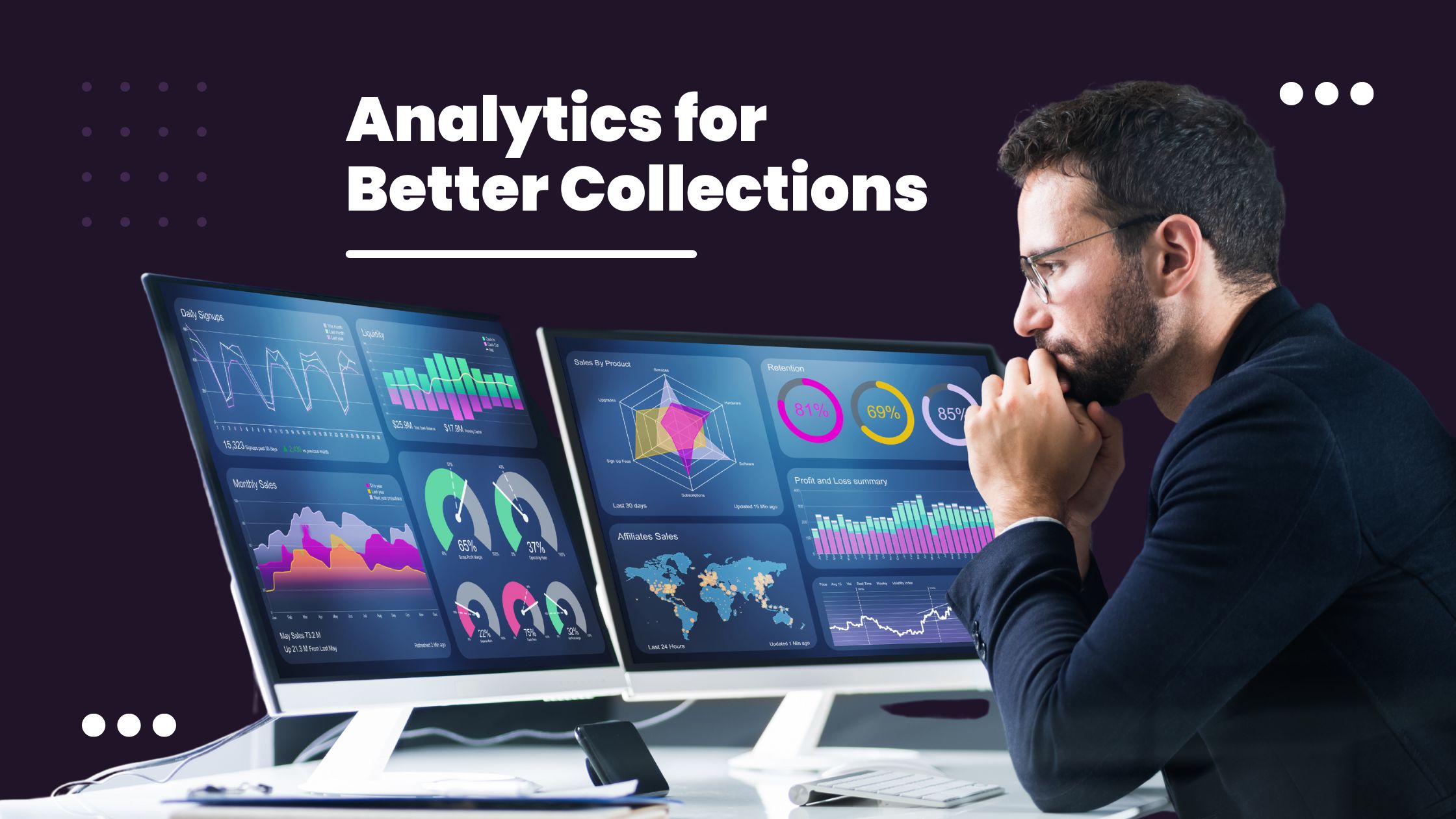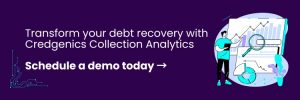With a higher focus on profitability, improving debt collections performance has become a priority for banks, non-banking financial companies (NBFCs) and fintech lenders. The challenge of recovering outstanding payments, managing delinquent accounts, and optimizing cash flow has led to a growing interest in leveraging advanced analytics and Machine Learning to improve debt collections performance. By implementing advanced analytics, institutions can make more informed decisions, streamline their debt collections process, and achieve higher recovery rates.
This blog explores how analytics can improve debt collections processes while transforming a traditionally complex and manual activity into a more efficient, data-driven operation.
Why debt collections analytics matters
Loan collections analytics uses data, machine learning, and predictive models to assess borrower behavior, payment patterns, and risk levels. This enables businesses to create personalized collection strategies that maximize recovery efforts while maintaining positive customer relationships.
Leveraging data-driven insights can improve debt collections efficiency, reduce delinquency rates, and offer a more customer-centric approach. The days of relying solely on bulls strategies and manual processes are gone. Debt collections analytics is critical for reducing bad debt, improving cash flow, and streamlining operations.
Key benefits of using analytics in debt collections
1. Prioritizing High-Risk Accounts
One of the most significant advantages of using analytics to improve debt collections performance is the ability to prioritize high-risk accounts. By segmenting borrowers based on variables such as risk level, outstanding balances, payment history, and other behavioral patterns, organizations can first target those that are most likely to pay.
Advanced predictive models can forecast the likelihood of payment or default, helping collection teams focus their resources on accounts with the highest recovery potential. This reduces time wasted on low-value or unresponsive debtors while enhancing overall efficiency.
Example: A lender might use machine learning algorithms to score borrowers based on their payment histories. Accounts with declining scores would be flagged for immediate action, while low-risk borrowers can be engaged through softer, more personalized methods.
2. Developing Personalized Collection Strategies
Not all borrowers are the same, so a one-size-fits-all approach to debt recovery does not yield the best results. Analytics enables businesses to develop tailored collection strategies for different borrower segments. Machine learning can predict the optimal time, communication channel (SMS, email, calls), and even the messaging tone to maximize debtor engagement.
This personalized approach enhances the likelihood of recovery while fostering better customer relationships. By leveraging insights from debtor behavior, businesses can create collection strategies that are less invasive and more likely to succeed.
For instance, Credgenics debt collections analytics provides insights into when and how borrowers prefer to be contacted, enabling lenders to optimize their outreach and increase repayment rates.
3. Reducing Bad Debt
Bad debt poses one of the most significant risks to any lending institution. Analytics can help reduce this risk by analyzing historical data to predict future payment behavior. By identifying borrowers at risk of defaulting, business can take preemptive action—whether through a customized payment plan or more intensive collection efforts.
The ability to spot early warning signs of default allows institutions to mitigate losses before they spiral out of control. It’s not just about recovering debt but also preventing it from going bad in the first place.
Example: By analyzing past payment behavior and trends, a lender can predict which accounts are most likely to default. This allows them to offer tailored repayment plans or escalate collection efforts early on.
4. Improving Cash Flow Management
Analytics does not just boost recovery rates; it also provides visibility into key metrics like payment cycle trends, outstanding debt amounts, and collection success rates. By understanding these trends, businesses can optimize their cash flow and working capital management.
For instance, a financial institution can monitor its daily, weekly, or monthly recovery trends, identifying seasonal dips or spikes in collections. This can help them plan for periods of low cash flow and take corrective measures before they affect the business.
5. Streamlining Operations
Incorporating analytics into debt collections automates many labor-intensive tasks, reducing the risk of human error and simplifying reporting. From automated data gathering to real-time analytics dashboards, lending businesses can use technology to make informed decisions faster and more accurately.
With less time spent on manual tasks, collection teams can focus on strategic decision-making. Automation also enhances transparency and provides managers with a clear overview of the team’s performance, operational bottlenecks, and improvement areas.
For example, Credgenics collection analytics dashboard provides an end-to-end view of the collection process, from debtor segmentation to the success rates of different communication channels. This kind of visibility helps streamline the overall process.
6. Enhancing Customer Relationships
Effective debt collections is not just about pursuing payments; it is about preserving long-term customer relationships. Analytics allows businesses to approach borrowers more strategically, improving their experience even when behind on payments.
By using data to communicate empathetically and offering personalized solutions, such as flexible repayment plans, businesses can develop positive customer relationships. This enhances loyalty and reduces churn, particularly in industries where repeat borrowing or customer retention is crucial.
Recommended Read: Transforming field debt collections: Tapping into AI-powered CG Collect
Success Story: Leading Fintech Company Leverages Analytics for Faster & Improved Collections
In a case study by Credgenics, a leading consumer lending fintech company leveraged advanced debt collections analytics to improve its collections performance. Through the implementation of analytics and AI-driven strategies, they achieved remarkable improvements: 27% higher recoveries, 25% reduction in collection time, and 70% recovery within the first week. Their transformation journey demonstrates how leveraging analytics to improve debt collections performance can revolutionize traditional processes while enhancing the customer experience.
Read the Complete Case Study →
Conclusion
Incorporating analytics into debt collections strategies is no longer optional; it is essential. Banks, NBFCs and other financial institutions that leverage data-driven insights can enhance their collections processes, reduce bad debt, and improve cash flow management. By prioritizing high-risk accounts, personalizing collection strategies, and streamlining operations, businesses can recover more debts while maintaining positive customer relationships. As more companies embrace the power of analytics to improve debt collection performance, the future of debt collections looks increasingly promising.
Frequently Asked Questions (FAQs)
1.How can debt collection analytics improve recovery rates?
Debt collection analytics helps organizations segment borrowers based on risk, payment history, and behavior. This allows businesses to prioritize high-risk accounts, predict payment behaviors, and develop personalized strategies, which significantly improve recovery rates.
2. What kind of data is used in debt collection analytics?
Debt collection analytics uses a variety of data sources, including historical payment data, account balances, customer interaction histories, and demographic information. Advanced systems may also use behavioral data and external credit reports to enhance accuracy.
3. Can analytics help in reducing bad debt?
Yes, by analyzing historical data and identifying early warning signs of default, businesses can take preemptive action, such as offering customized repayment plans or escalating collection efforts before the debt turns bad.
4. How does automation in debt collection analytics streamline operations?
Automation reduces manual tasks like data collection and reporting. With real-time dashboards and automated workflows, collection teams can focus on decision-making rather than repetitive tasks, improving efficiency and reducing errors.
5. Is debt collection analytics customizable for different industries?
Yes, debt collection analytics can be tailored to suit different industries, such as banking, NBFCs, and ARCs. By adjusting the parameters and algorithms, businesses can ensure the analytics meet their specific needs and challenges.
6. What are the benefits of using a debt collection analytics platform like Credgenics?
A platform like Credgenics offers comprehensive features, including automated debtor segmentation, predictive modeling, real-time reporting, and personalized outreach strategies. This leads to improved collections efficiency, reduced bad debt, and enhanced customer satisfaction.






